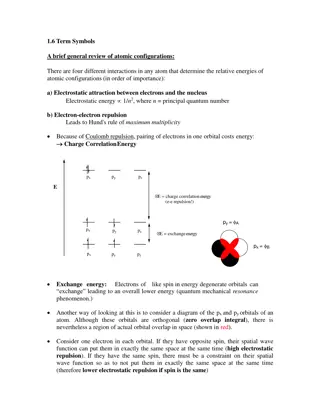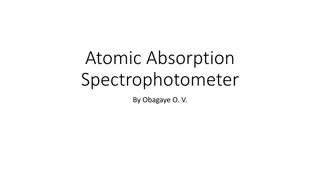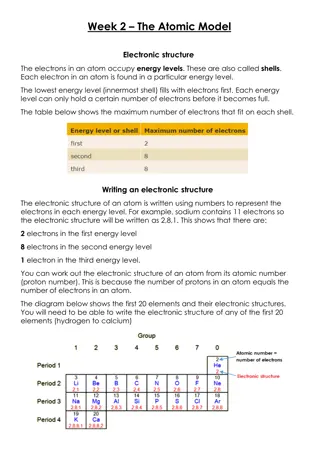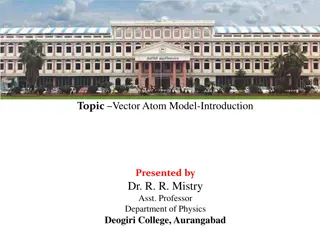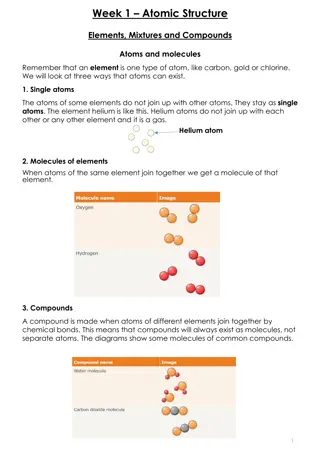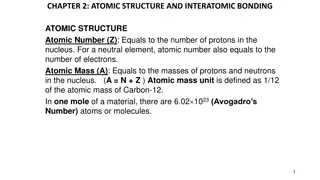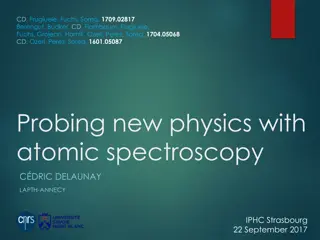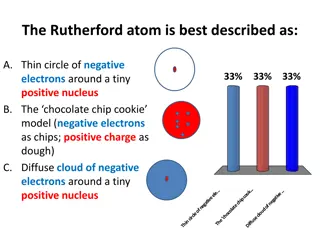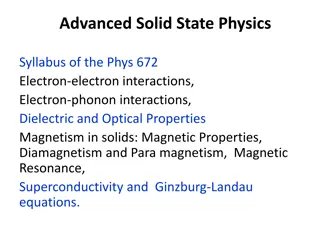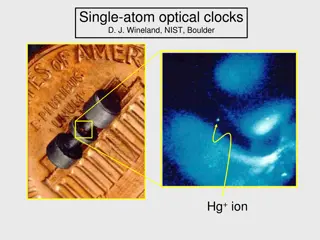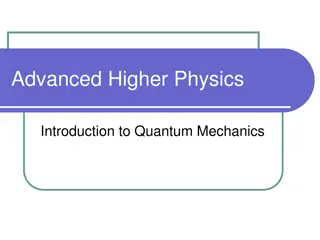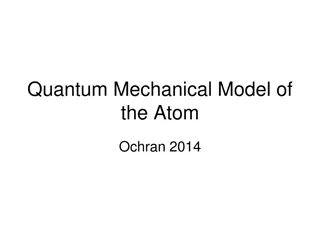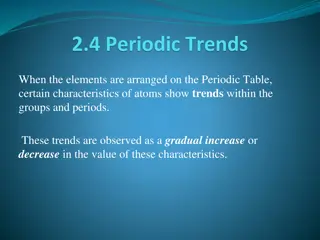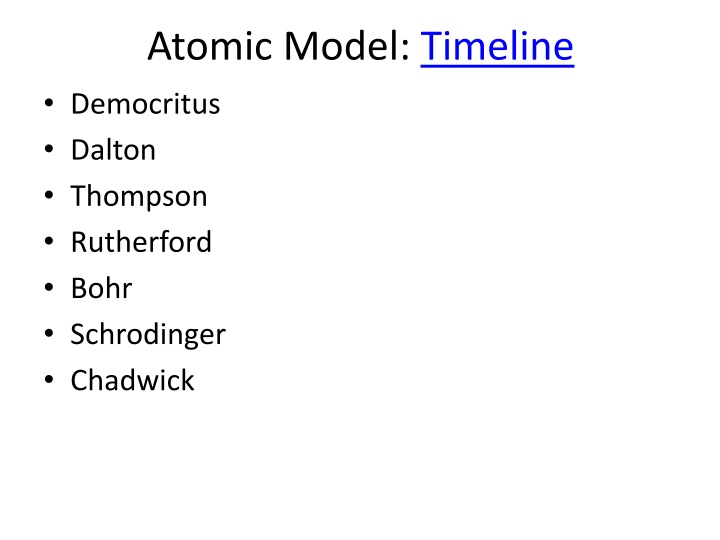
Evolution of Atomic Models: From Democritus to Bohr
Explore the timeline of atomic models from Democritus to Bohr, including key contributions by Dalton, Rutherford, Schrodinger, and more. Learn about Bohr's model and postulates, orbital radius, energy level diagrams for hydrogen, and wavelengths of the Balmer series.
Download Presentation

Please find below an Image/Link to download the presentation.
The content on the website is provided AS IS for your information and personal use only. It may not be sold, licensed, or shared on other websites without obtaining consent from the author. If you encounter any issues during the download, it is possible that the publisher has removed the file from their server.
You are allowed to download the files provided on this website for personal or commercial use, subject to the condition that they are used lawfully. All files are the property of their respective owners.
The content on the website is provided AS IS for your information and personal use only. It may not be sold, licensed, or shared on other websites without obtaining consent from the author.
E N D
Presentation Transcript
Atomic Model: Timeline Democritus Dalton Thompson Rutherford Bohr Schrodinger Chadwick
Bohr Model Bohr's theory begins with Rutherford's picture of an atom as a nucleus surrounded by electrons moving in circular orbits. In his theory, Bohr made a number of assumptions and combined the new quantum ideas of Planck and Einstein with the traditional description of a particle in uniform circular motion. Bohr s Postulates: 1. Electrons in stationary orbits do not radiate. 2. The atom radiates energy as photon when it transition to lower energy.

